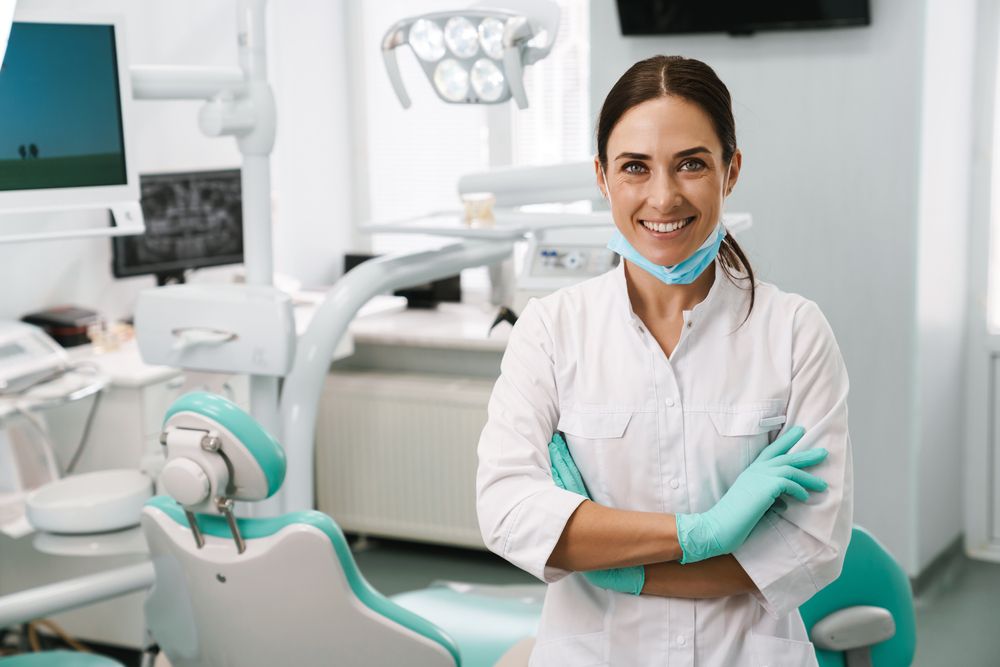At Tulsa Precision Dental, patients are often curious about the tools behind advanced restorative treatments. One of the most transformative innovations in dental care is CAD/CAM technology, which stands for Computer-Aided Design and Computer-Aided Manufacturing. This digital process streamlines the creation of dental restorations such as crowns, bridges, veneers, and inlays with unprecedented accuracy and efficiency. Unlike traditional methods, which rely on physical impressions and off-site lab fabrication, CAD/CAM systems enable dental professionals to design and produce custom restorations in-office or in collaboration with specialized labs using digital workflows.
CAD/CAM systems consist of three essential components: digital scanning technology to capture the shape of teeth and gums, software to design the restoration virtually, and a milling unit or 3D printer to manufacture it from ceramic or composite blocks. The result is a faster, more precise restoration process that prioritizes patient comfort, aesthetics, and function. For patients in Tulsa and beyond, this technology represents a leap forward in both convenience and clinical outcomes.
How the CAD/CAM Process Works in Dentistry
Understanding the step-by-step process of CAD/CAM dentistry helps patients better appreciate its benefits. First, the dentist captures a digital scan of the patient’s teeth using an intraoral scanner. This replaces the traditional impression trays filled with putty, which many patients find uncomfortable. The digital image is then displayed on a monitor, allowing the dentist to examine the tooth in detail and design a restoration that fits precisely with the surrounding structures.
Once the design is complete, the data is sent to an in-office milling unit or external lab for fabrication. If performed in-office, the milling process often takes less than an hour, allowing some restorations to be placed on the same day. The finished product is then polished, adjusted as needed, and bonded to the patient’s tooth. This seamless process drastically reduces wait times and the need for multiple appointments, while ensuring a snug and natural fit.
Benefits of CAD/CAM Technology for Patients
CAD/CAM systems offer a variety of advantages that directly impact patient experience. One of the most immediate benefits is time efficiency. In traditional dental restoration workflows, creating a crown or veneer can take several weeks and require multiple visits. With CAD/CAM, many procedures can be completed in a single appointment, eliminating the need for temporary crowns and return visits.
Additionally, the precision of digital imaging and design software means that restorations are more accurate than those created using physical molds. A better fit means fewer adjustments, longer-lasting results, and a more comfortable bite. From an aesthetic standpoint, CAD/CAM-produced restorations can be customized in color, shape, and translucency to closely match the surrounding teeth. This level of detail enhances cosmetic outcomes and boosts patient confidence in their smile.
Types of Dental Restorations Created with CAD/CAM
CAD/CAM technology is versatile and supports a wide range of dental restorations. Each type offers its own set of benefits depending on the clinical needs and goals of the patient. Common CAD/CAM restorations include:
- Dental Crowns: Custom-designed to fit over a damaged or decayed tooth, restoring its strength and appearance.
- Bridges: Used to replace missing teeth by anchoring to adjacent teeth or implants.
- Inlays and Onlays: Partial restorations that fit within or on top of a tooth’s surface to treat moderate decay or damage.
- Veneers: Thin ceramic shells applied to the front surface of teeth to enhance aesthetics or correct minor flaws.
- Implant Restorations: Custom abutments and crowns that restore dental implants to function and appearance.
Because CAD/CAM software allows for detailed customization, dentists can ensure each restoration meets the specific needs of the patient, from structural support to cosmetic enhancement.
Patient Comfort and Digital Workflow Advantages
One of the most appreciated aspects of CAD/CAM dentistry is the comfort it offers patients throughout the diagnostic and restorative process. Traditional impressions are often a source of discomfort, particularly for patients with strong gag reflexes or anxiety. Intraoral scanners eliminate this step, replacing it with a quick and painless digital scan that takes just a few minutes.
The overall workflow of CAD/CAM dentistry is streamlined and less invasive. Because the digital system reduces the margin for error, fewer adjustments are typically needed once the restoration is complete. This means shorter chair time and greater predictability in outcomes. Additionally, digital records can be stored and accessed for future reference, simplifying ongoing dental care and improving communication between general dentists, specialists, and dental labs.
Accuracy and Longevity of CAD/CAM Restorations
The strength and durability of CAD/CAM restorations are a direct result of the materials and methods used in fabrication. Most CAD/CAM units mill restorations from high-quality ceramic or composite blocks, which are known for their resilience and natural appearance. These materials can withstand normal chewing forces and are resistant to wear, staining, and chipping.
In terms of fit, digital scanning and design software offer a level of detail that is difficult to match with analog techniques. Restorations can be crafted to exact measurements, reducing the likelihood of issues such as loose fit, uneven bite, or premature failure. With proper care and regular dental checkups, CAD/CAM restorations can last for many years, often rivaling or exceeding the lifespan of traditional lab-made counterparts.
Future Developments in Digital Dentistry
CAD/CAM dentistry continues to evolve with advancements in artificial intelligence, materials science, and 3D printing. As software becomes more intuitive, dental professionals can plan and design restorations with even greater speed and accuracy. AI integration may further enhance diagnostic capabilities, suggesting treatment options and automatically identifying potential fit issues.
Materials used in CAD/CAM systems are also improving, offering stronger and more esthetically versatile options. Innovations like hybrid ceramics and biocompatible composites are expanding what is possible with chairside fabrication. Additionally, the rise of 3D printing in dentistry may complement or eventually replace milling in certain applications, making restorative care even more accessible and customizable. These developments signal a future where personalized, high-quality dental care is faster and more efficient than ever.
What Patients in Tulsa Should Know About CAD/CAM Dentistry
For patients in Tulsa who are considering restorative treatments, understanding the advantages of CAD/CAM technology can be incredibly empowering. From faster turnaround times to enhanced comfort and longevity, this digital approach to dentistry prioritizes patient needs at every step. While not every case is suited to CAD/CAM, especially if a unique material or custom aesthetic is required, the vast majority of patients can benefit from its accuracy and speed.
Tulsa Precision Dental remains committed to helping patients understand their options through education and transparent communication. By staying informed about technologies like CAD/CAM, patients can actively participate in their care and feel confident in the quality of their dental restorations.
Resources
Miyazaki, T., Hotta, Y., Kunii, J., Kuriyama, S., & Tamaki, Y. (2009). A review of dental CAD/CAM: current status and future perspectives. Journal of Prosthodontic Research.
Bindl, A., & Mörmann, W. H. (2005). Clinical evaluation of adhesively placed Cerec endo-crowns after 2 years. International Journal of Prosthodontics.
Abduo, J., Lyons, K., & Bennani, V. (2014). Fit of ceramic fixed partial dentures: a systematic review. Journal of Oral Rehabilitation.



